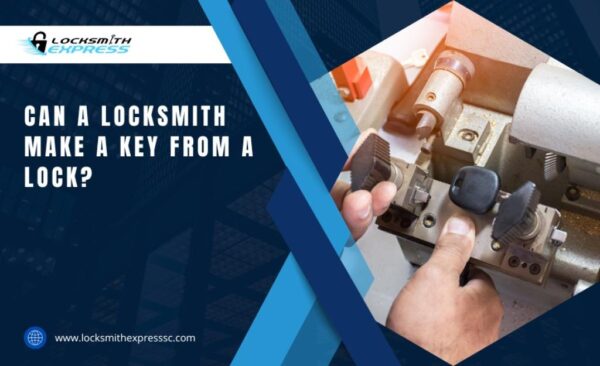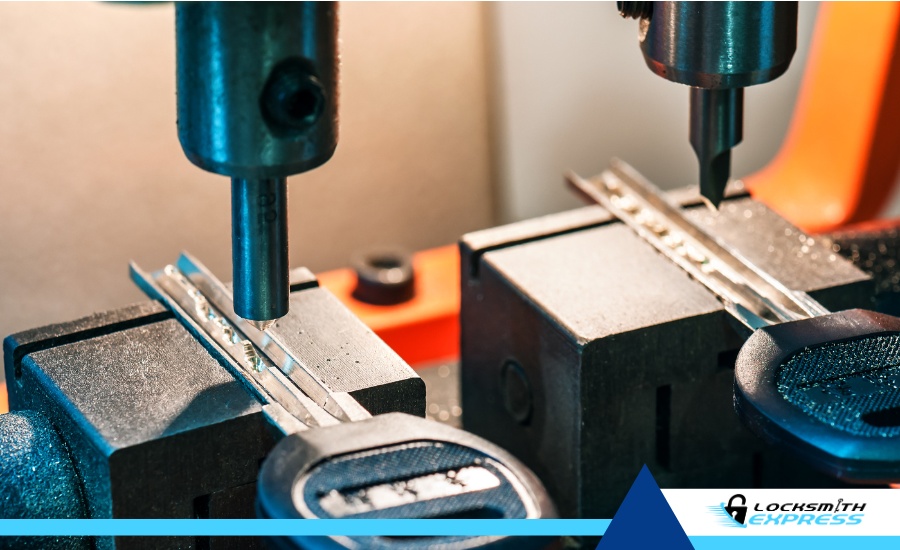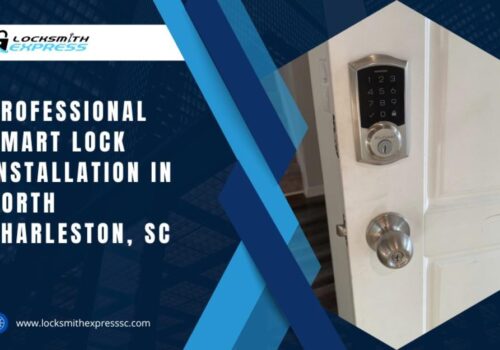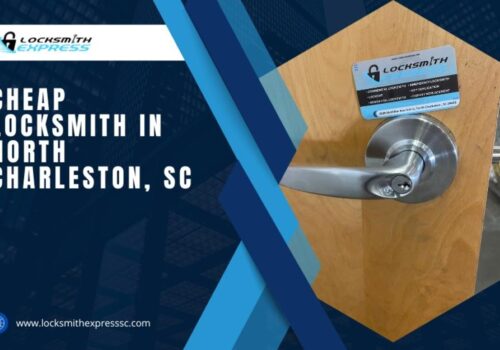Have you ever found yourself staring at a lock with no key, wondering, ‘Can a locksmith make a key from a lock?’ It's a more common scenario than you might think, and understanding the skills and services of a locksmith can be incredibly valuable in these moments. Locksmiths are not just about rescuing you when locked out; they are masters of key cutting, lock repair, and much more.
- The Art and Science of Key Making
- Key Cutting Techniques
- The Lock Mechanism
- Tools of the Trade: Locksmith Equipment
- Advanced Tools for Key-Making
- Key Impressioning Tools
- Laser Key Cutting Machines
- Code-Cutting Machines
- Duplication machines
- Specialty Tools
- Modern Vs. Traditional Methods
- Embracing Technology in Modern Locksmithing
- The Enduring Value of Traditional Locksmithing
- Balancing Both Worlds
- From Lock to Key: A Step-by-Step Guide
- Initial Assessment and Lock Analysis
- Understanding the Lock Type
- Gathering Information
- Choosing the Right Technique
- Safety and Security Considerations
- Crafting the Key
- The Process of Key Fabrication
- Ensuring Precision
- Key Design and Structure
- Overcoming Key-Making Challenges
- Handling Diverse Lock Types
- Technical and Mechanical Challenges
- Keeping Up with Technology
- Customer Expectations and Time Constraints
- Handling Complex Locks
- Advanced Locks and Their Challenges
- Solutions for Complex Locks
- Accuracy and Precision in Key-Making
- The Need for Precision
- Ensuring Precision in Emergencies
- Maintaining Precision
- Ethical and Legal Considerations in Locksmithing
- Privacy and Security Protocols
- The Importance of Ownership Verification
- Methods of Verification
- How to Choose a Reliable Locksmith
- Identifying Professional and Trustworthy Services
- Red Flags to Watch Out For
- Frequently Asked Questions
- Can a locksmith make a key from a lock?
- How long does it take for a locksmith to open a house?
- What should I do if I lose my house keys?
- Can locksmiths make keys for any lock?
- Is it safe to use a locksmith to access my home?
- Trust Locksmith Express for Your Homeâs Security
Imagine losing the keys to an important cabinet at work or coming home to realize you've misplaced your house keys. These situations can disrupt your day and cause a lot of stress. But here's where the expertise of a locksmith comes into play. They possess the unique ability to create a new key from just the lock itself – a skill that often seems like magic to most of us
In this article, we'll unravel the mystery behind this fascinating aspect of locksmithing. You'll discover:
- The intricate process of key-making from a lock.
- The tools and techniques locksmiths use to save the day.
- Steps to ensure you're choosing a reliable and skilled locksmith.
So, what's the secret behind a locksmith's ability to create a new key without the original? And, just as importantly, how long do impact windows last in this process? While it might seem like these are two different topics, they intertwine in the world of locksmithing and security. Strong windows can safeguard your home, but what if you're locked out due to lost keys? That's where a locksmith's expertise becomes essential.
Stay with us as we dive into the world of locksmith services and learn how these experts keep our lives running smoothly, even when we drop the ball. You'll walk away with answers and the confidence to handle such situations in the future. Let's unlock these secrets together!
The Art and Science of Key Making
Key making is a fascinating blend of art and science, a skill that locksmiths have perfected over the years. This process isn't just about shaping a piece of metal; it's about precision, understanding the lock's mechanism, and replicating a perfectly fitting key. Locksmiths use various techniques, each suited to different locks and situations.
Key Cutting Techniques
Key cutting is the primary method locksmiths use to create new keys. This intricate process requires skill and precision to ensure that the new key functions smoothly with the lock.
- Manual Key Cutting: This traditional method uses hand tools to carve a key blank into the correct shape. It requires a skilled hand and a keen eye for detail. Manual cutting is often used for older or more traditional locks, where precision and a personalized touch are crucial.
- Automatic Key Cutting: A machine replicates the key using a template or the original key. It's faster and more precise, ideal for modern locks and when multiple key copies are needed. Automatic cutters are known for their key-cutting precision, making them popular among locksmiths.
- Laser Key Cutting: Laser cutting uses a high-precision laser to carve the key blank. It’s used for more complex keys, such as those with an internal cut or a dimple pattern. This method is renowned for its accuracy and is used for high-security locks.
- Code Key Cutting: Locksmiths use a special machine that cuts the key based on a code. This method doesn't require the original key and is often used when the key is lost. Code key cutting relies on a database of key designs and patterns, allowing locksmiths to create a perfect match for the lock.
Key making is more than just cutting; it's about ensuring the new key works seamlessly with the lock, maintaining the security and integrity of the lock system. Locksmiths often use a trial-and-error approach to fine-tune the key, ensuring it aligns perfectly with the lock's pins or tumblers.
The art of key cutting requires technical skill and a deep understanding of different lock types and their mechanisms. Each lock demands a unique approach, from simple padlocks to complex security systems. Locksmiths are adept at handling various situations, making them indispensable in our daily lives, especially when in a bind.
The Lock Mechanism
Understanding the intricate mechanisms of locks is a critical skill for any locksmith. This ability, often referred to as lock mechanism understanding, is what sets professional locksmiths apart. Each lock presents its puzzle, which requires a deep knowledge of how different locking mechanisms work.
Locksmiths often encounter various lock types, from simple pin tumbler locks in most homes to complex electronic or biometric systems. Each type requires a unique approach. For instance, a traditional pin tumbler lock operates on a system of pins and springs, which the locksmith must align correctly to turn the lock. On the other hand, electronic locks might need programming skills and an understanding of digital security systems.
A key aspect of understanding lock mechanisms is lock-picking skills. Contrary to what movies might show, lock picking isn't just about raking a pick inside the lock. It's a meticulous process that involves feeling each pin and carefully manipulating it to align with the shear line. This skill is especially important when a locksmith needs to gain entry without the original key or damaging the lock.
Locksmiths also need to be adept at decoding combination locks, using their understanding of the lock's internal mechanisms to figure out the correct sequence of numbers or symbols. This knowledge is critical in situations where the combination is lost or forgotten.
Overall, the ability to decipher different lock mechanisms enables locksmiths to create keys, gain entry, and ensure the lock's security after their work is complete.
Tools of the Trade: Locksmith Equipment
Locksmiths rely on various specialized tools to perform their tasks effectively. These tools are not just for key making; they are crucial for unlocking, repairing, and installing locks.
- Lock Picks: The most recognized tool in a locksmith's kit. Lock picks come in various shapes and sizes, each designed for different locks.
- Key Extractor: Sometimes, parts of a broken key get stuck in the lock. A key extractor is used to remove these fragments without damaging the lock.
- Plug Spinner: If a lock has been picked in the wrong direction, a plug spinner quickly rotates the plug to the correct position without re-picking the lock.
- Electric Pick Gun: This tool vibrates and moves rapidly to simulate the motion of hand-picking a lock but at a much faster pace.
- Bump Keys: These specially crafted keys can open pin tumbler locks, used when the original key is unavailable.
- Key Duplicator: For creating duplicate keys, this machine traces the original key's shape and cuts a new key to match.
- Key Decoder: This tool helps determine the right key blank and the depth and spacing of cuts needed to make a new key.
- Code Machine: Used for creating keys without the original, based on manufacturers' specifications.
- Lock Scope: A small optical device that helps locksmiths see the inner workings of a lock, useful in understanding complex mechanisms.
- Tension Wrenches: Essential for applying tension when picking a lock, they come in different sizes to fit various lock types.
These tools represent just a fraction of what might be found in a professional locksmith's toolkit. Each tool has its specific purpose, helping locksmiths navigate the complexities of the different locks and situations they encounter. With these tools and their skills, locksmiths ensure they can address any lock-related issue, providing their clients with security and peace of mind.
Advanced Tools for Key-Making
Advanced tools play a pivotal role in locksmithing, especially in the key-making process. These tools, an essential part of locksmith tools and equipment, are not just about cutting or shaping; they are about precision, adaptability, and tackling various challenges that different locks present. Let's explore some specialized tools that help locksmiths perform their magic.
Key Impressioning Tools
The key impression technique is a fine art in locksmithing. It involves inserting a blank key into the lock and manipulating it to create marks or impressions. These impressions indicate where the cuts need to be made on the key. Specialized tools used in this technique include:
- Impressioning Files: Fine files are used to cut the key blank based on the marks made by the lock's pins.
- Key Grip Holders: These hold the key blank firmly during the impressioning process, ensuring accuracy.
- Magnifying Tools: Magnifiers or optical devices to accurately read the impressions on the key blank.
Laser Key Cutting Machines
These machines represent the pinnacle of key-making technology. They use lasers to cut the key blank, which allows for a high level of precision. This is especially useful for making complex keys, such as those with dimple cuts or intricate patterns.
- Laser Cutting Head: The part of the machine that emits the laser, precisely cutting the key blank.
- Computer Interface: Software that guides the laser cutting head, often programmed with key specifications for accuracy.
Code-Cutting Machines
When the original key is missing, code-cutting machines come to the rescue. These are programmed with key specifications and can cut a key based on the lock code or key code.
- Electronic Calibration: Ensures the machine cuts the key to exact specifications.
- Key Code Database: A comprehensive database that contains key specifications for various lock types and brands.
Duplication machines
Duplication machines are used to create copies of existing keys. They can replicate a key quickly and accurately.
- Key Alignment System: Ensures the original and the blank key are perfectly aligned for accurate duplication.
- Cutter Wheel: The part of the machine that does the actual cutting of the key blank.
Specialty Tools
Some key-making scenarios require specialized tools, often for high-security locks or unique situations.
- Tubular Key Cutters: Used for cutting tubular keys, often found in vending machines or bike locks.
- Sidewinder Key Cutters: These are used for cutting sidewinder or laser-cut keys, often found in modern automotive locks.
| Tool Type | Purpose | Key Features |
| Impressioning Files | To shape key blank based on impressions | Fine-grade, precision |
| Key Grip Holders | Hold the key blank during impressions | Firm grip, accuracy |
| Magnifying Tools | Read impressions accurately | High magnification, clarity |
| Laser Cutting Machines | Cut complex key patterns | High-precision, intricate cuts |
| Code Cutting Machines | Create keys without the original | Key code database, electronic calibration |
| Duplication Machines | Make copies of the keys | Alignment system, efficient cutting |
| Tubular Key Cutters | Cut tubular keys | Specialized cutting |
| Sidewinder Key Cutters | Cut sidewinder keys | Precision for modern keys |
These tools not only highlight the technological advancement in locksmithing but also the skill and precision required in the trade. With these advanced tools, locksmiths can ensure that they have the right solution for every key-making need, whether it’s a simple home lock or a high-security system. This intricate and skilled work underscores the importance of choosing a professional and experienced locksmith with the right tools and know-how to handle any lock-related challenge.
Modern Vs. Traditional Methods
The locksmith industry has evolved significantly over the years, adapting to new challenges and technologies. This evolution has led to a blend of modern and traditional locksmithing methods, each with unique strengths and challenges. Let's delve into how these methods compare and coexist.
Embracing Technology in Modern Locksmithing
Modern locksmithing has embraced technological advancements, significantly changing how locksmiths operate. Key aspects of modern locksmithing include
- Precision and Efficiency: Modern tools, such as laser cutters and code machines, provide unparalleled precision and efficiency in key-making. This precision is crucial, especially for complex locking systems.
- Electronic Locks and Keyless Systems: The rise of digital locks and keyless entry systems presents opportunities and modern locksmith challenges. Locksmiths need to be proficient in electronic systems and understand how to install, repair, and sometimes hack into these sophisticated locks.
- Speed and Scalability: With modern tools, locksmiths can produce keys and solve lock issues faster than ever before, catering to the fast-paced demands of today's society.
The Enduring Value of Traditional Locksmithing
Despite technological advancements, traditional locksmithing techniques remain invaluable, especially in certain scenarios:
- Craftsmanship and Personalization: Traditional methods, where keys are handcrafted, offer a level of personalization that machines can't replicate. This approach is essential for antique locks or unique lock-and-key systems where a standard approach doesn’t work.
- Tactile Skills and Intuition: Traditional locksmithing relies heavily on tactile skills and intuition. Feeling the pins in a lock and understanding the mechanics by touch is an art form crucial for picking locks and creating keys without modern equipment.
- Versatility in Various Situations: Sometimes, modern tools are not available, or the lock is too old or unique for them to work effectively. In these cases, traditional techniques are not just useful but necessary.
Balancing Both Worlds
The best locksmiths can balance both modern and traditional methods. They understand when to use a high-tech machine for efficiency and precision and when the human touch is needed for a particular lock or situation. This balance is crucial in providing comprehensive services to many clients.
- Combining Skills and Tools: Often, a locksmith might use a combination of both methods. For example, a modern machine can be used to cut the basic shape of a key but finish it off with hand files for fine-tuning.
- Understanding the Lock's History and Design: A locksmith's ability to assess whether a lock requires a modern or traditional approach is essential. It involves understanding the lock's history, design, and the customer's needs.
From Lock to Key: A Step-by-Step Guide
Creating a lock from a lock is a fascinating process combining skill, precision, and a deep understanding of lock mechanisms. This journey from lock to key is intricate, beginning with a thorough assessment of the lock. Let's explore these steps in detail.
Initial Assessment and Lock Analysis
The first step in making a key from a lock is a detailed inspection and analysis. This phase is crucial, as it determines the approach the locksmith will take.
Understanding the Lock Type
- Identify the Lock: The locksmith starts by identifying the type of lock. Is it a traditional pin tumbler lock, a tubular lock, or a more complex high-security lock? Each type requires a different method.
- Assess the Lock's Condition: A critical part of lock inspection is assessing the condition of the lock. Is it worn out, damaged, or in good working order? This affects the ease of key-making.
Gathering Information
- History of the Lock: Gathering information about the lock, like its age, brand, and previous issues, can provide valuable insights.
- Reason for Key Making: Understanding why the key is being made is also essential. Is it due to lost keys, a desire for a spare, or part of an emergency key-making service?
Choosing the Right Technique
- Selecting the Technique: Based on the inspection, the locksmith decides whether to use impressions, code cutting, or another method.
- Preparing Tools and Equipment: The locksmith prepares the necessary tools and equipment, like impression files for a manual approach or a key-cutting machine for a more modern method.
Safety and Security Considerations
- Security Protocols: Ensuring the security of the lock and property is paramount. The locksmith ensures that creating a new key doesn't compromise the lock's integrity.
- Legal and Ethical Considerations: The locksmith also verifies ownership of the lock and adheres to legal and ethical standards to prevent unauthorized access.
This initial assessment is a critical part of the key-making process. It sets the stage for the actual creation of the key and ensures that the locksmith can provide a solution tailored to the specific needs and circumstances of the client. The goal is to ensure access and the continued security and functionality of the lock. This careful start reflects the locksmith's commitment to quality, precision, and customer satisfaction in every aspect of their work.
Crafting the Key
Once the initial assessment and lock analysis is complete, the locksmith creates the key. This stage, known as key fabrication, involves several detailed steps to ensure the new key perfectly matches the lock.
The Process of Key Fabrication
- Cutting the Key Blank: The locksmith starts by selecting a key blank, an uncut key that matches the brand and type of the lock. Using the chosen technique, the locksmith begins to shape the blank.
- Impressioning: If the impression method is used, the locksmith inserts the blank into the lock and manipulates it to create marks. These marks guide the locksmith in filing down the blank to form the right shape.
- Code Cutting: For code cutting, the locksmith uses the lock's code to set up a machine that cuts the key to the exact specifications required.
- Refining the Key: Once the basic shape of the key is cut, the locksmith refines it, ensuring smooth insertion and operation within the lock. This step might involve fine-tuning the cuts and smoothing any rough edges.
Ensuring Precision
- Testing the Key: After the key is cut and refined, the locksmith tests it. This ensures the key turns smoothly and unlocks the lock without any issues.
- Adjustments: The locksmith makes the necessary adjustments if the key doesn’t work perfectly on the first try. This might involve more impressioning, filing, or cutting.
Key Design and Structure
Understanding key design and structure is vital. Each lock has a unique design, which requires a key with a specific structure. The teeth or notches on the key must align precisely with the pin tumbles or wafers inside the lock for it to work correctly.
Overcoming Key-Making Challenges
Crafting a key from a lock isn't always straightforward. Locksmiths often face challenges in key-making; overcoming them is part of their expertise.
Handling Diverse Lock Types
- Variety of Locks: Locksmiths encounter different types of locks, from simple to high-security models. Each type requires a specific approach in the key making.
- Antique Locks: Older or antique locks often require a more delicate, handcrafted approach, as they might not conform to modern standards.
Technical and Mechanical Challenges
- Worn or Damaged Locks: If a lock is worn or damaged, creating a key that works reliably can be more difficult. The locksmith might need to repair the lock or work around the wear.
- Lack of Original Key: Without the original key, the locksmith relies solely on their skill and knowledge of the lock's mechanics to create a new key.
Keeping Up with Technology
- High-Security and Electronic Locks: Modern high-security locks and electronic locking systems present unique challenges, often requiring advanced tools and specialized knowledge.
Customer Expectations and Time Constraints
- Urgency: Often, customers need a new key as part of an emergency service. Working efficiently under time pressure is crucial to a locksmith’s job.
- Meeting Customer Needs: Ensuring the new key meets the customer’s expectations in terms of functionality and aesthetics is also essential.
In overcoming these challenges, locksmiths demonstrate their technical skills, problem-solving abilities, attention to detail, and commitment to providing the best service possible. This comprehensive approach ensures that no matter the situation, the locksmith can craft a key that grants access while maintaining the lock's integrity and security.
Handling Complex Locks
In the realm of locksmithing, one of the more challenging aspects is dealing with advanced locks. These complex lock solutions require higher expertise, especially when creating keys for them.
Advanced Locks and Their Challenges
- High-Security Keys: Locks designed for high security, such as those used in commercial properties or high-end residences, often have intricate key designs. These designs can include additional side cuts, unique angles, or special coding, which are meant to enhance security and prevent unauthorized duplication.
- Electronic and Smart Locks: In today’s digital age, electronic and smart locks are becoming increasingly common. Crafting keys for these locks or resolving issues often involves a blend of traditional locksmith skills and knowledge of digital technology.
Solutions for Complex Locks
- Specialized Tools and Techniques: Locksmiths use advanced tools and techniques to tackle these complex locks. This might include electronic equipment for diagnosing and programming smart locks or precision tools for intricate key cutting.
- Continuous Learning and Adaptation: The locksmithing field is always evolving, especially with new lock technologies. Professional locksmiths continuously learn and adapt to these changes, ensuring they can handle any lock, no matter how complex.
Accuracy and Precision in Key-Making
Accuracy and precision are the cornerstones of the key-making process. Even a slight misalignment or incorrect cut can render a key useless. This is why key-cutting precision is a crucial skill for locksmiths.
The Need for Precision
- Perfect Fit and Function: To function smoothly, a key must perfectly match the lock’s internal mechanism. This requires precise cutting, shaping, and finishing.
- Avoiding Damage to the Lock: Inaccurate key cuts can result in a non-functioning key and risk damaging the lock, which can be an expensive issue to rectify.
Ensuring Precision in Emergencies
The need for precision becomes even more critical during emergencies. There's no room for error when someone is locked out and requires immediate access. Emergency locksmith services prioritize fast, precise key-making to resolve the situation quickly and efficiently.
Maintaining Precision
- Regular Calibration of Tools: Locksmiths regularly calibrate their key-cutting machines and hand tools to maintain precision.
- Quality Control Checks: After making a key, locksmiths perform several quality control checks to ensure the key fits and turns smoothly in the lock without any hitches.
Ethical and Legal Considerations in Locksmithing
Locksmithing, much like any other profession that deals with security and privacy, is bound by a set of ethical and legal considerations. These guidelines ensure the locksmith's work upholds the highest integrity and respect for customer privacy.
Privacy and Security Protocols
Adhering to Legal Standards
- Legality of Services: Locksmiths must operate within the legal framework set by local, state, and federal laws. This includes obtaining the necessary licenses and adhering to regulations governing their trade.
- Verification of Client Identity: Before proceeding with any job, especially when it involves lock picking or creating a new key, locksmiths are required to verify the identity of their client. This step is crucial to ensure that they are not aiding unauthorized access to a property.
Respecting Customer Privacy
- Confidentiality of Information: During their work, locksmiths might have access to sensitive information, such as security systems or access codes. Upholding locksmith ethics means maintaining the confidentiality of any personal or security-related information they come across.
- Discretion in Service: Locksmiths often find themselves in situations that require discretion, be it a home lockout or a security breach at a business. How they handle these situations reflects their commitment to customer service in locksmithing.
Ethical Practices
- No Exploitation of Vulnerabilities: Ethical locksmiths never take advantage of a client's emergency for financial gain. Charging fair prices and suggesting only necessary services are key aspects of ethical conduct.
- Honesty and Transparency: Clear communication about the services provided, the costs involved, and the nature of the work is fundamental. Clients should always be informed about what the locksmith is doing and why.
Handling Sensitive Situations
- Domestic and Legal Disputes: Locksmiths sometimes find themselves in domestic or legal disputes. In such cases, they must navigate these situations delicately, ensuring they are not violating legal boundaries or privacy rights.
- Emergency Services: During emergency callouts, such as lockouts, swift action must be balanced with thorough verification processes to ensure legal compliance and ethical service delivery.
Locksmiths play a pivotal role in maintaining the security and privacy of individuals and businesses. Adhering to ethical and legal considerations is not just a professional requirement but a commitment to trustworthiness and responsibility. By following these principles, locksmiths not only protect their clients but also uphold the integrity of their profession. This commitment to ethics and legality makes the locksmith industry a trusted and respected part of the security sector.
Verifying Lock Ownership
One of the most critical steps in the locksmithing process is verifying the lock's ownership before creating a new key. This step is vital for ensuring the security of the property and upholding ethical standards in the profession.
The Importance of Ownership Verification
- Preventing Unauthorized Access: The primary reason for verifying ownership is to prevent unauthorized access. Locksmiths are responsible for ensuring that they are not inadvertently assisting in illegal activities, such as break-ins.
- Upholding Professional Ethics: Verifying ownership aligns with the ethical standards expected in locksmithing. It demonstrates a commitment to security enhancements and the protection of clients.
- Building Trust with Clients: When locksmiths take steps to verify ownership, it builds trust with their clients, showing that they take their security and privacy seriously.
Methods of Verification
- Requesting Proof of Identity: Locksmiths typically ask for a government-issued ID to confirm the identity of the person requesting the service.
- Checking Property Documents: In some cases, locksmiths may also request to see property documents, like a lease agreement or utility bills, to confirm ownership or residency.
- Collaborating with Law Enforcement: In ambiguous situations, locksmiths might collaborate to ensure they comply with legal and ethical standards.
How to Choose a Reliable Locksmith
Selecting a trustworthy and competent locksmith is crucial for ensuring the security of your property. Here are some key points to consider when choosing a locksmith:
- Look for Professional Certifications: Ensure the locksmith has the necessary locksmith certifications. These certifications indicate they have undergone proper training and adhere to industry standards. Check if reputable organizations accredit the locksmith. This adds an extra layer of trust and reliability.
- Check for Experience and Reputation: More years in business can indicate greater experience and reliability. Look at online reviews and testimonials to gauge the locksmith’s reputation.
- Assess the Range of Services Offered: A reliable locksmith should offer a range of services, from key cutting to lock installation and repair. If you have specific needs, like a high-security lock system, ensure the locksmith specializes in that area.
- Evaluate Responsiveness and Professionalism: Quickly responding is crucial in emergencies. Check how swiftly the locksmith can arrive at your location. A professional locksmith should communicate, provide a detailed quote, and answer any questions you have.
- Ensure Transparent Pricing: A trustworthy locksmith will provide a clear and detailed quotation before starting work. Ensure no hidden fees or unexpected charges exist.
- Guarantee and Follow-Up Services: A reliable locksmith will guarantee their work, providing peace of mind about the quality of their service. Check if they offer after-service support in case of any issues post-completion.
Choosing the right locksmith is about balancing skill, reliability, and professionalism. By considering these factors, you can ensure that you select a locksmith who not only meets your needs but also provides a service that is secure, ethical, and dependable.
Identifying Professional and Trustworthy Services
When it comes to ensuring the security of your home or business, selecting professional locksmith services is crucial. Here are some tips to help you identify a reputable and trustworthy locksmith:
- Research and Recommendations: Ask friends, family, or neighbors for locksmith recommendations. Personal experiences can be a reliable guide. Check online review sites and forums to understand previous customers' experiences with local locksmiths.
- Credentials and Experience: A professional locksmith should have the necessary licenses and insurance. These credentials are a sign of legitimacy and professionalism. Look for locksmiths who have been in the business for several years. Experienced locksmiths are more likely to have dealt with various lock-related issues.
- Service Range and Availability: A reputable locksmith will offer a wide range of services, from key duplication to advanced security system installations. Professional local locksmiths often provide 24/7 services, which is essential for emergencies.
Red Flags to Watch Out For
While there are many trustworthy locksmiths, it’s also important to be aware of potential red flags that could indicate substandard service or fraudulent practices.
Excessive Upfront Costs
Be cautious of locksmiths who demand large deposits or upfront fees before inspecting the work.
Lack of Transparency
A professional locksmith should provide a clear and detailed quote. Avoid locksmiths who offer vague cost estimates. Reputable locksmiths will have marked vehicles and uniforms and should willingly provide identification and credentials upon request.
Poor Communication and Pressure Tactics
A trustworthy locksmith communicates clearly and professionally. Be wary of those who are evasive or unclear in their explanations. Beware of locksmiths who pressure you to make quick decisions, especially in non-emergency situations.
Frequently Asked Questions
Can a locksmith make a key from a lock?
Absolutely! A locksmith can make a key from a lock using a few different methods. The most common method is called 'impressions'. Here, the locksmith inserts a blank key into the lock and turns it to create marks. These marks show where the key needs to be cut to fit the lock. Another way is using the lock code, which is like a recipe for making the key. This method is super useful if the original key is lost. Locksmiths have special tools and skills for this job. They're like detectives figuring out a lock's secret to make the perfect key!
How long does it take for a locksmith to open a house?
Getting locked out of your house is no fun, but a locksmith can usually get you back in quickly. How long it takes can vary. For a standard lock, it might take about 30 minutes. But if your lock is more complex or if there’s an additional security feature, it could take longer. Good locksmiths work carefully to open your lock without damaging it. They have special tools and know-how to tackle different types of locks, so even if it feels like a long time, they're working as fast as they can to help you.
What should I do if I lose my house keys?
Losing your house keys can be stressful, but don't worry; there's a solution! The first thing you should do is call a professional locksmith. They can make a new key for your lock, or if you're worried about security, they can change it completely. It's important to consider changing the locks if you think someone might find and use your lost keys. Locksmiths offer different solutions depending on your situation and how secure you want to be. They're like security experts who ensure you and your home are safe.
Can locksmiths make keys for any lock?
Locksmiths are pretty skilled and can make keys for most locks. However, there are some exceptions. It might be a bit more challenging if your lock is very old or rare or a high-security lock with special restrictions. In these cases, the locksmith might need extra work, like creating a key from scratch or solving a puzzle. But most of the time, whether it's your house, office, or even a padlock, a locksmith can help you by making a new key.
Is it safe to use a locksmith to access my home?
Yes, using a locksmith to get back into your home is safe. Professional locksmiths are trained to open locks without damaging them. They're like the good guys in movies who can crack a safe! It’s important to choose a trustworthy and certified locksmith, though. A good locksmith will ask you for proof that you live in the house. This is to ensure they're not helping a bad guy break in. They should also explain what they're doing and how much it will cost. So, with the right locksmith, you can feel safe returning to your home.
Trust Locksmith Express for Your Home’s Security
Don't leave your security to chance. Choose Locksmith Express for peace of mind. Visit us in North Charleston, SC, or give us a call – let us be your partner in securing your property. Your safety is our top priority!









